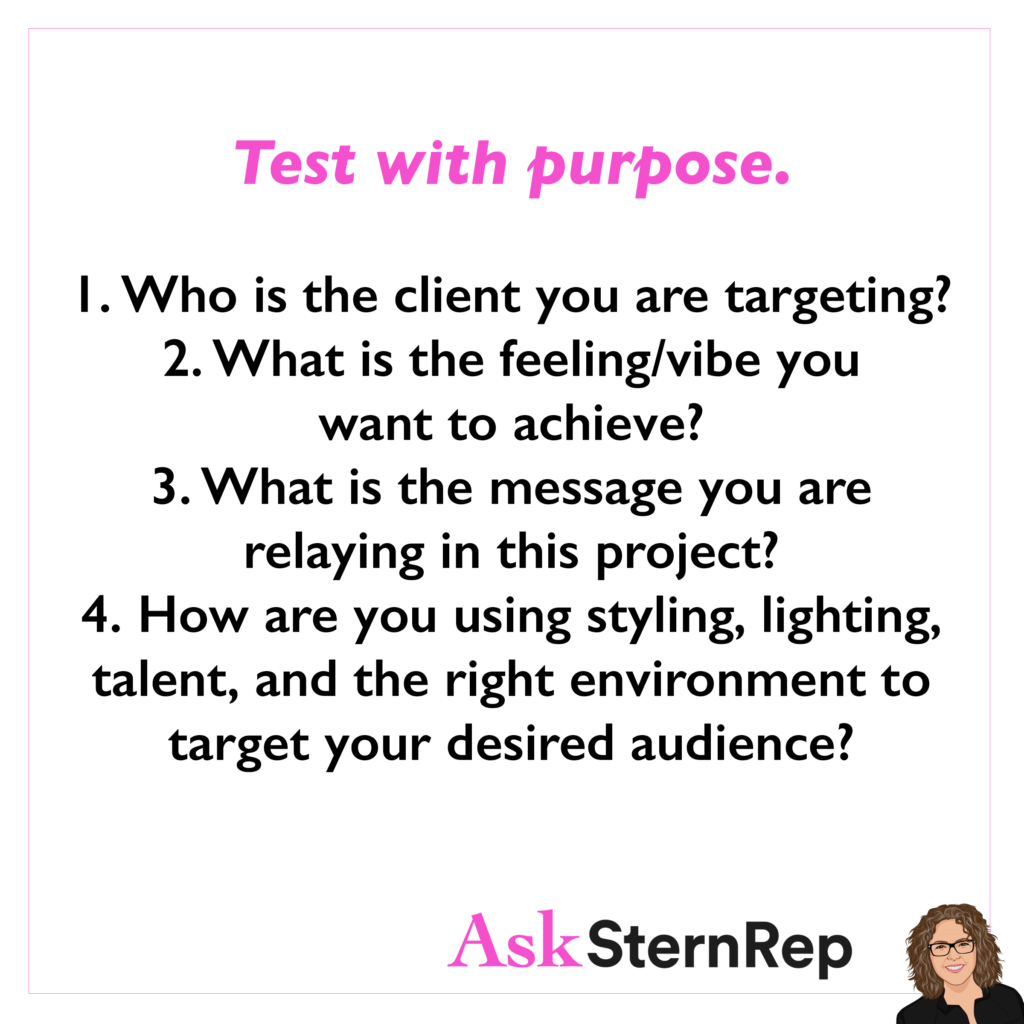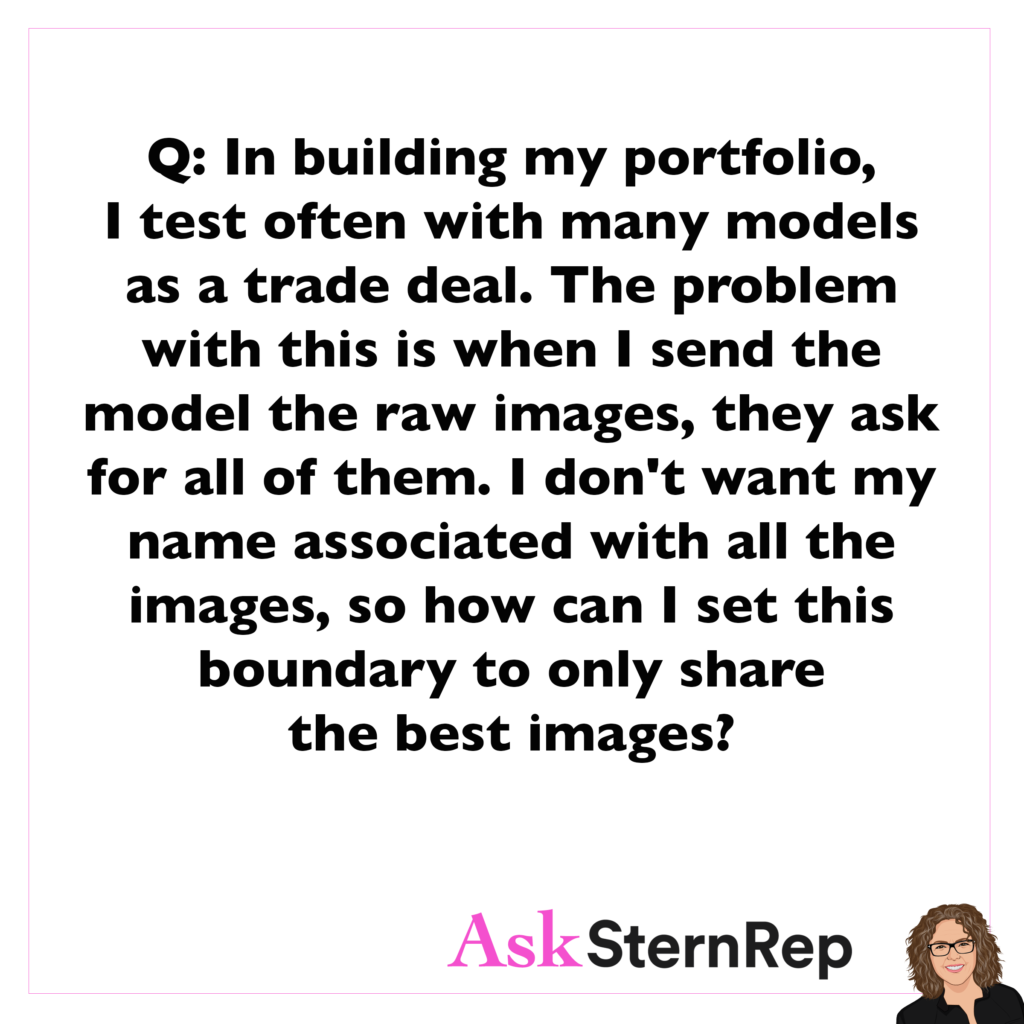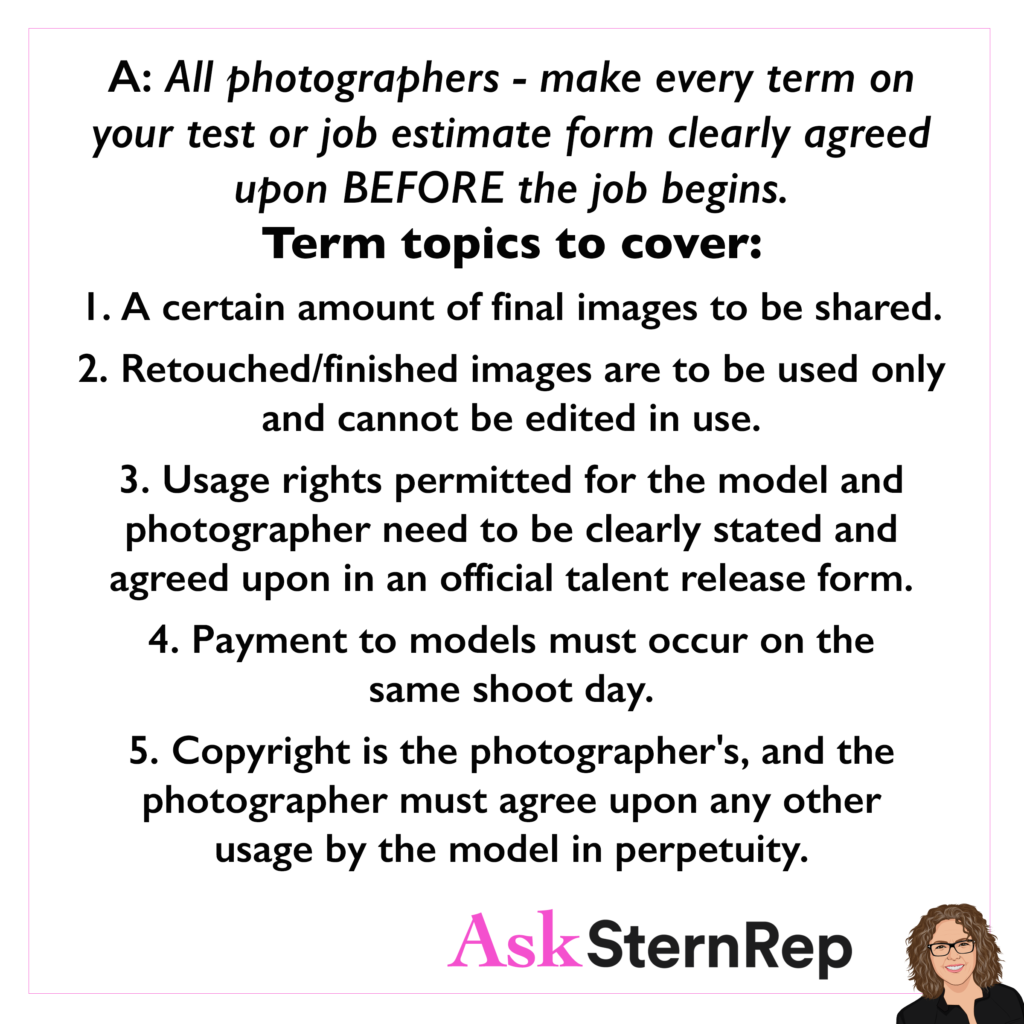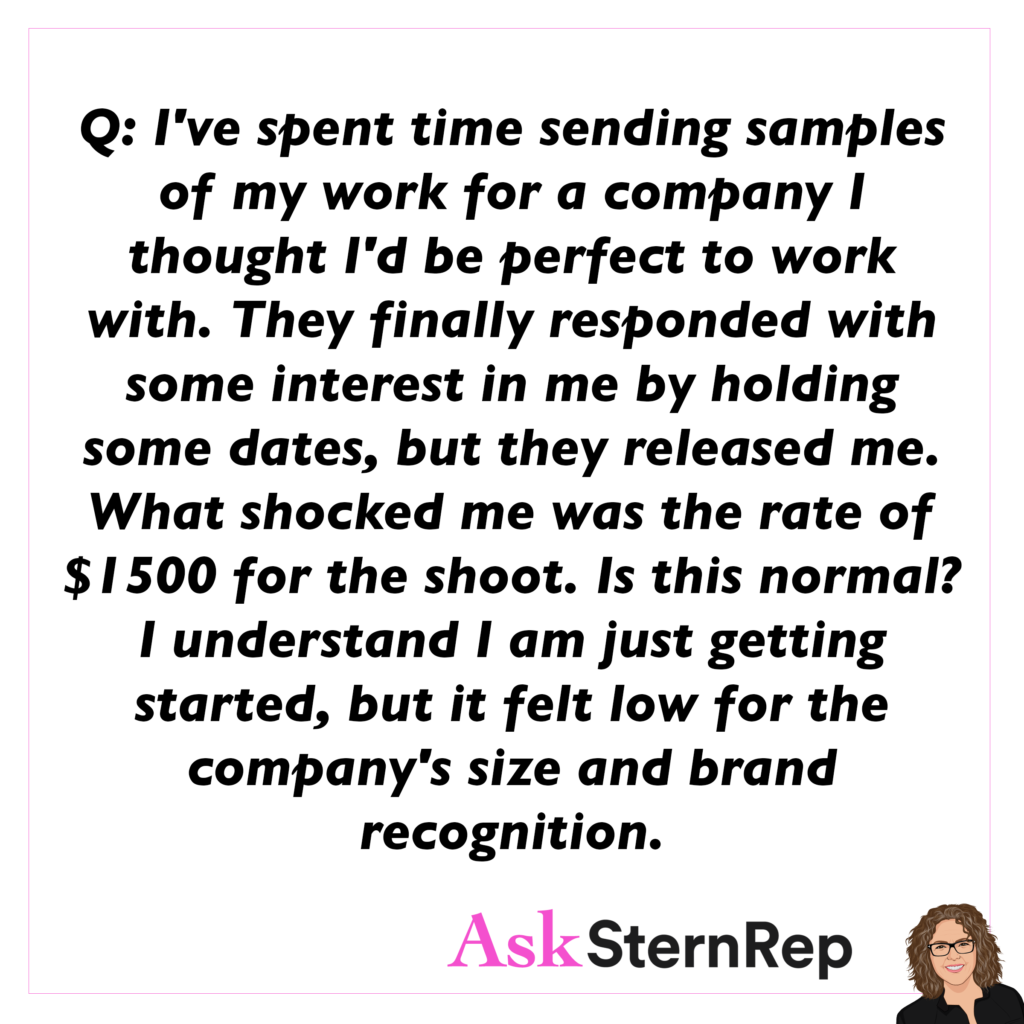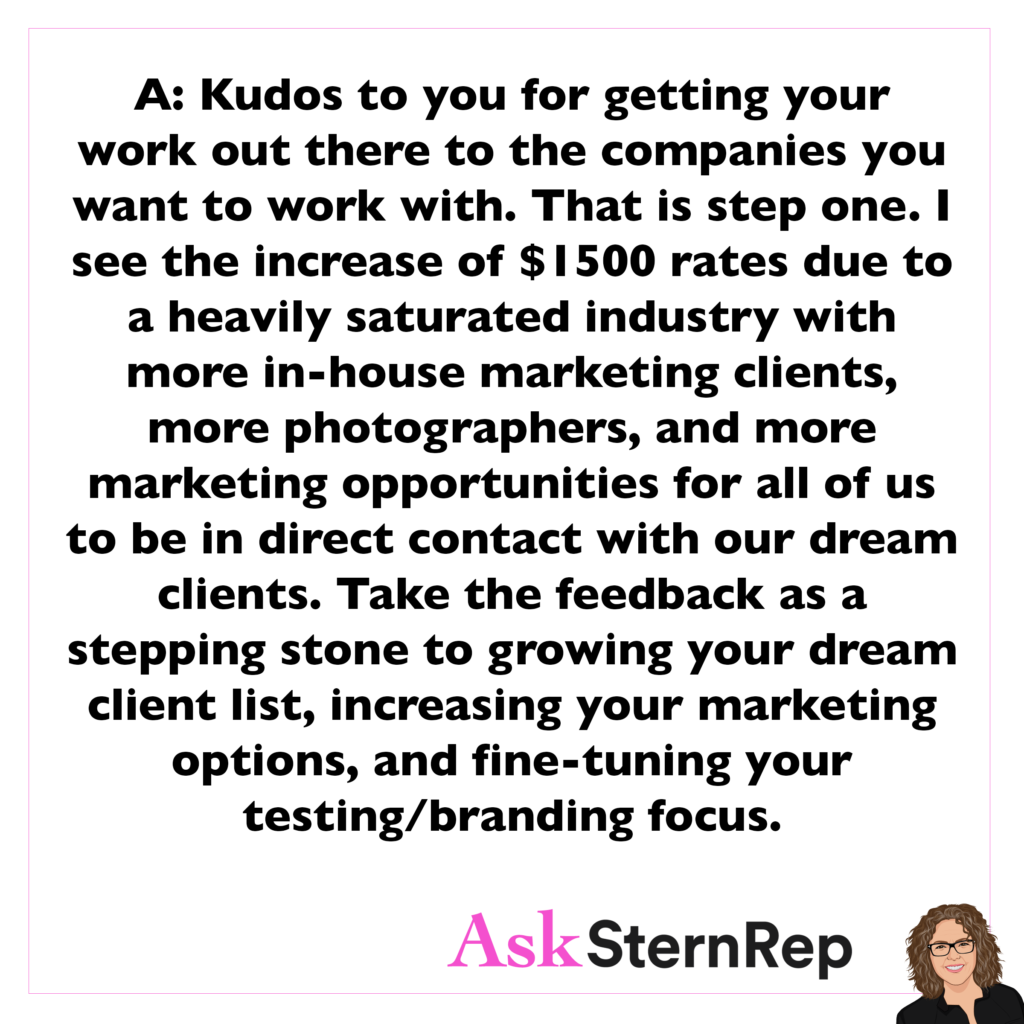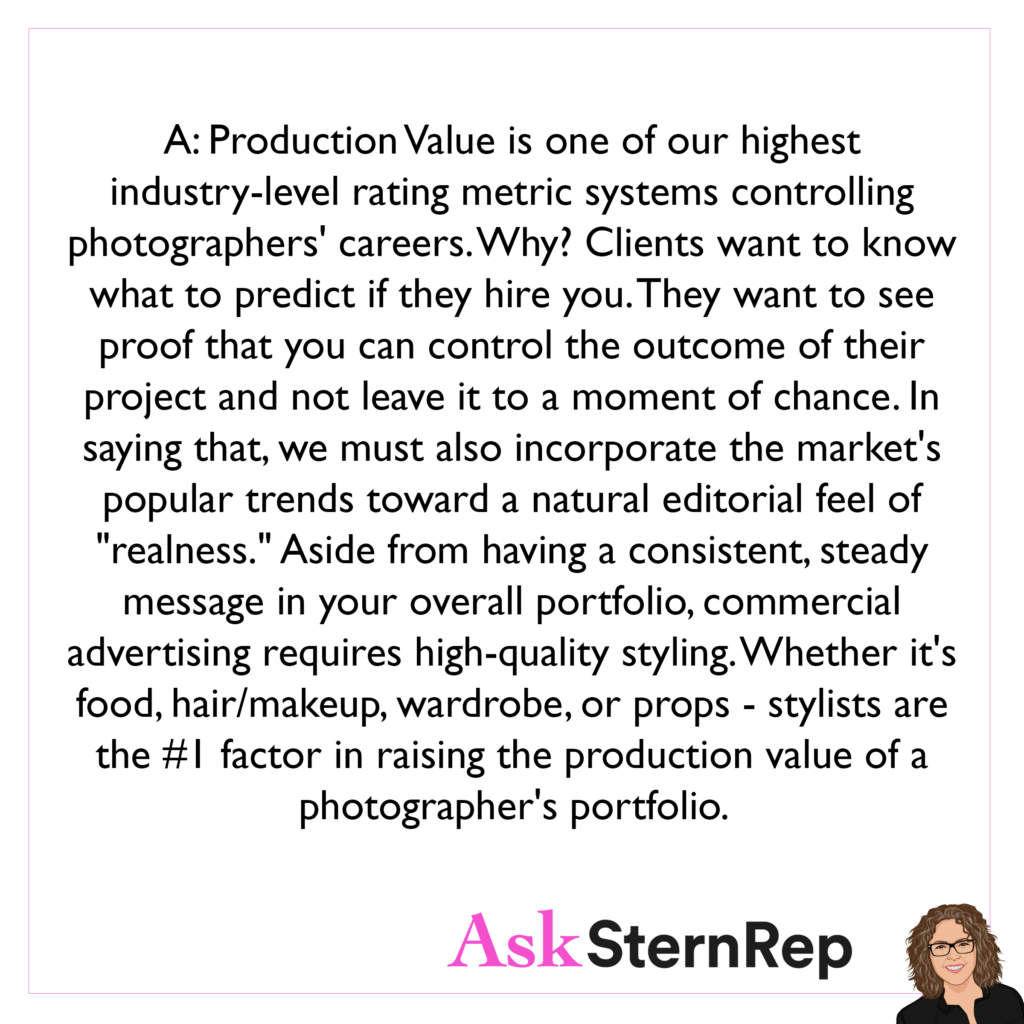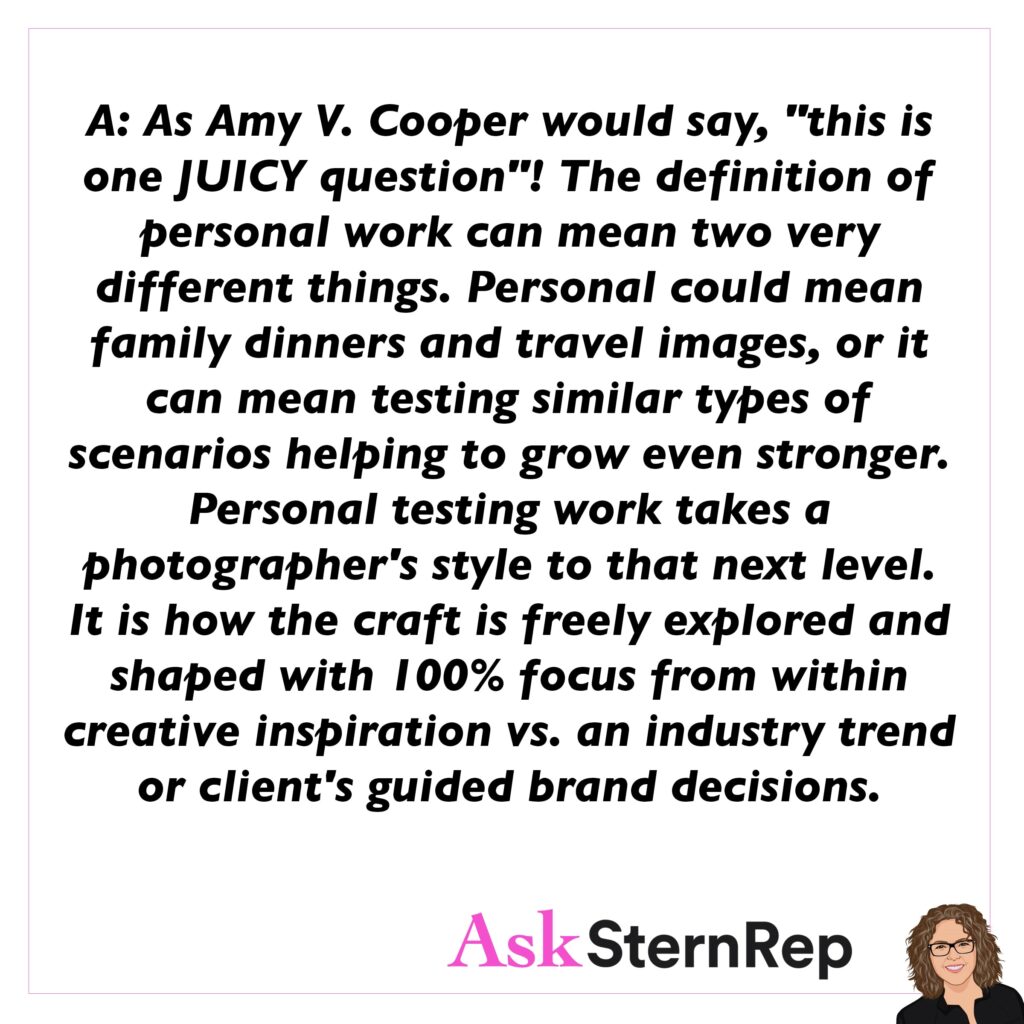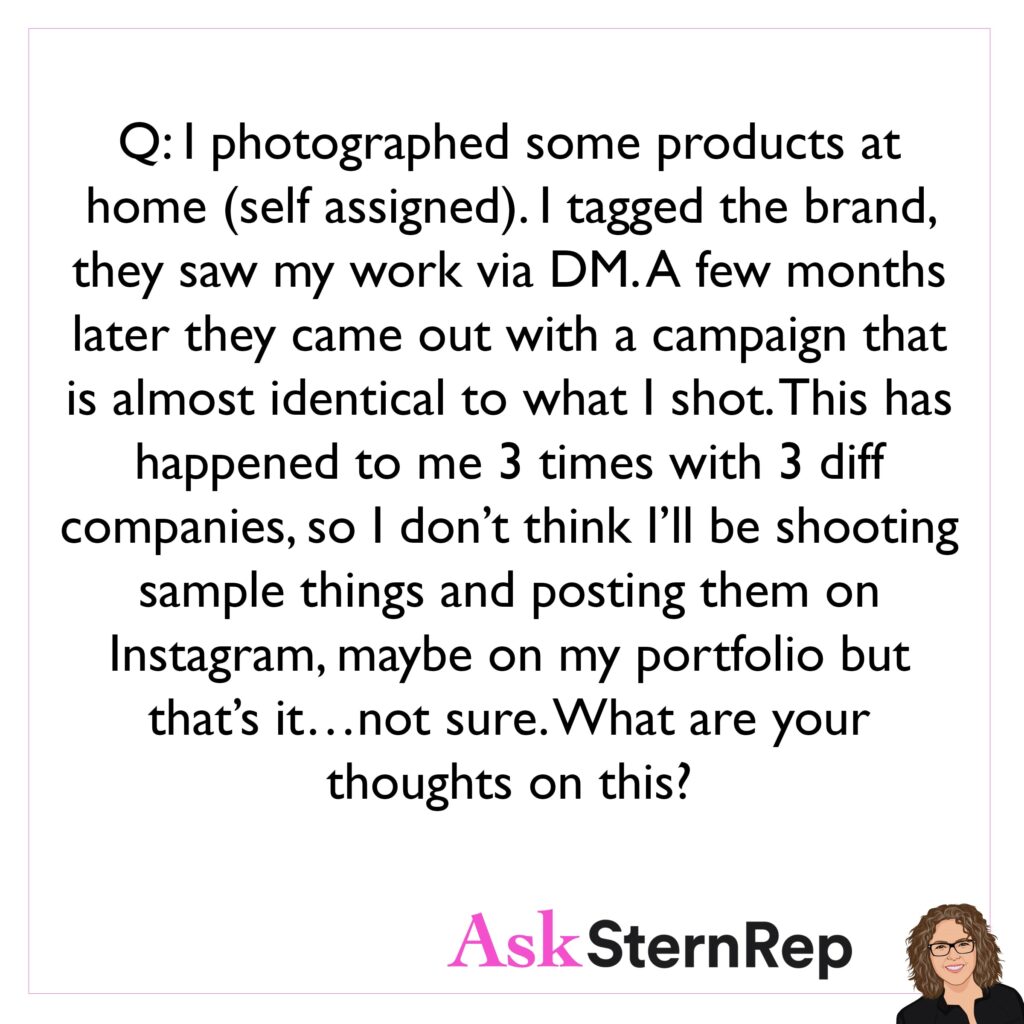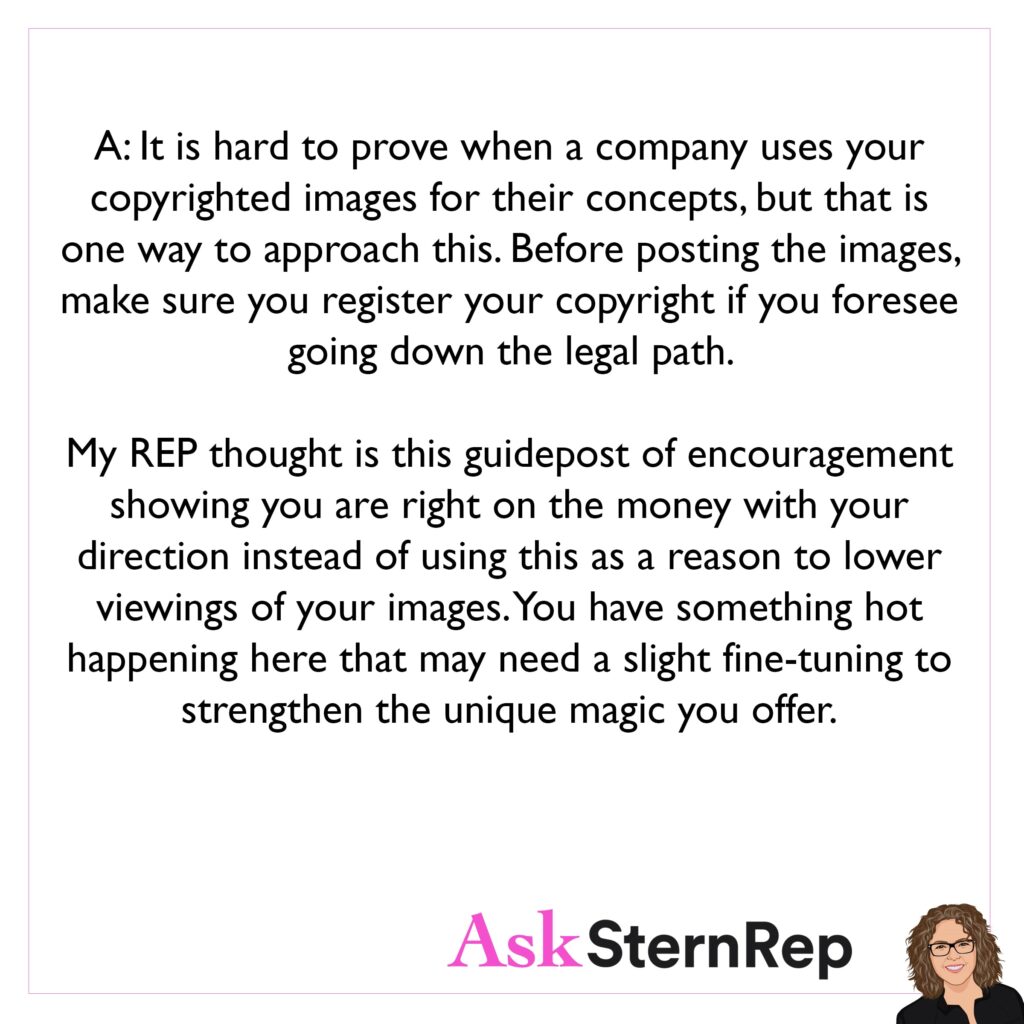

Q:
Once you do a test shoot, what is the best way to get this new work in front of the right audience?
A:
As a rep, this is one of my favorite topics because this is the purpose of testing. Reps and consultants’ goals are all about shaping the long-road path. I call this- “growing forward.” Every test should have a client in mind, and with that comes the OUTREACH follow-through to share the images with the appropriate “warm” and “cold” potential clients. Outreach happens on all platforms, including personalized communication, to upgrade clients to a warmer level than where they are now. You want to be good enough to be on their list when that specific type of project comes up. This is either a monotonous process or a fine-tuned, distinct, mapped-out marketing plan.

